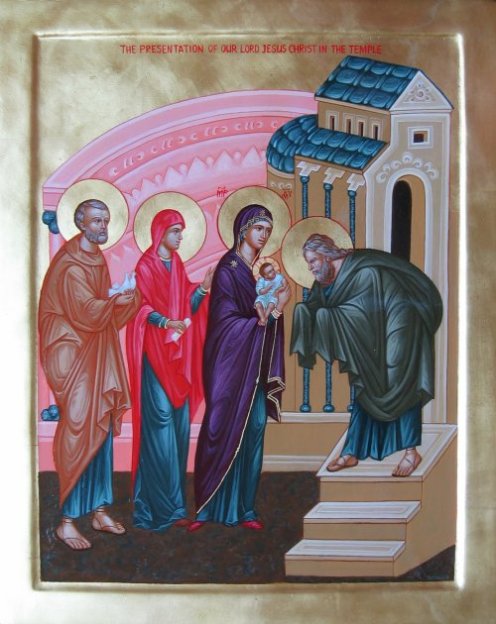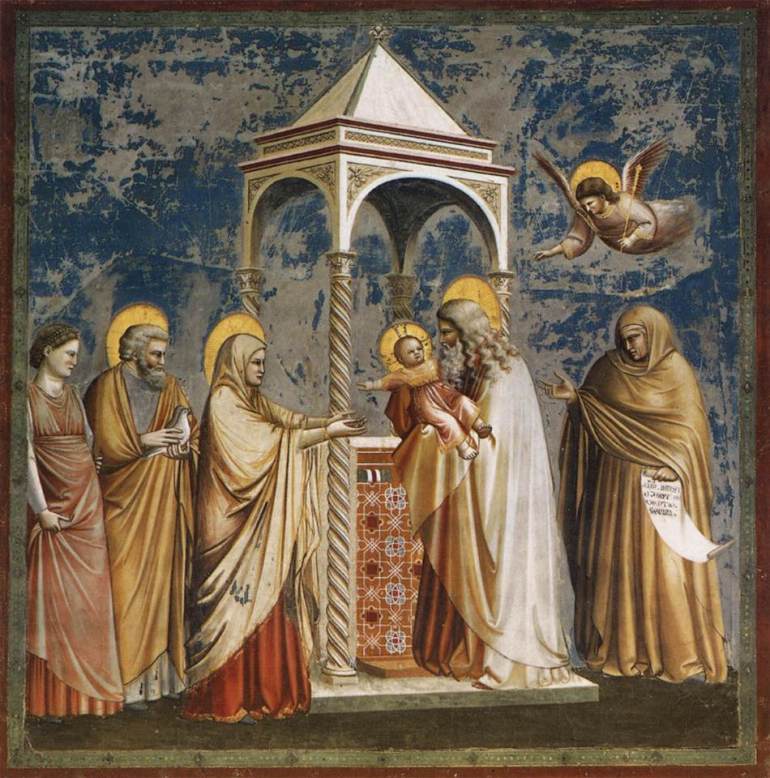The LORD said to Moses, “Consecrate to me all the first-born; whatever is the first to open the womb among the people of Israel, both of man and of beast, is mine.”
(Book of Exodus, Chapter 15)
According to the Mosaic law recorded in Exodus, the first-born son of every observant Jew should be dedicated to God in the Temple at Jerusalem forty days after his birth, where the mother would also complete her ritual purification. So forty days after the birth of Jesus, the Feast of the Presentation, otherwise known as Candlemas is celebrated on February 2nd
It is called Candlemas because the tradition developed of the bringing the candlemas for the year to the church on this day so that they might be blessed.
In Luke’s Gospel (Luke 2: 22-40), he describes how the elderly St Symeon, called a priest, takes up the Christ-child in His arms and declares the words that have become the Nunc Dimitis, sung every day in the liturgy of the Church at Compline (Night Prayer) and Evening Prayer in the Anglican Use.
In this beautiful icon painted by Tatiana Grant, Symeon’s recognition of baby Jesus as the Messiah is shown in his deep reverence: bowing low and receiving Christ with covered hands.

(Following the criteria laid down by St Theodore the Studite in the 9th century, the name of the feast icon is named and clearly visible, in English so the congregation can read it.)
The Mother of God presents her child to Simeon while nearby is Anna, recognizable as a prophetess by the scroll she holds offers prayers. Joseph brings a sacrificial offering to the Temple. In Leviticus, it states that forty days after the birth of the first-born son, the mother must bring a lamb and a turtledove to the priest as a burnt-offering. “And if she is not able to bring a lamb [i.e. she is too poor], then she may bring two turtledoves or two young pigeons–one as a burnt offering and the other as a sin offering.” (Lev 12:8) Joseph is shown with two turtledoves, reinforcing the humble background into which Christ was born.
In Giotto’s fresco below, dating from the period around the end of the 13th century we see all the same components in the narrative.

The Canticle of Simeon is sung here in English to a tone I composed and in a setting by Paul Jernberg that I use at Evensong and Compline. You can see the score too if you follow this link: gospel-canticle-nunc-dimitis
In the Melkite Byzantine Catholic Church the hymn (‘Troparion’) for the day is as follows:
Hail, O woman full of grace, Virgin and Mother of God, from you has arisen the Son of Justice, Christ our God, enlightening those who stand in darkness. You, too, just Elder Simeon, rejoice, for you carried in your arms the Redeemer of our souls, our Resurrection.
You can hear it sung on the St Elias website here: Troparion for the Feast of the Presentation.

The painting above is by the French artist, Sebastian Bourdon, 1644. It is painted in the baroque style, very different from the iconographic or gothic/early renaissance style of Giotto, but all the iconographic elements are present here too.
The words of the Nunc Dimittis refer to the prophesy that Our Lord will ‘enlighten the Gentiles’. The consideration of the idea of the Christ as the Light of the World is not restricted to this feast, of course, but the daily singing of the canticle that arises from the scripture passages connected to it do make the celebration of Candelmas especially poignant.
At last, all-powerful Master, +you give leave to your servant * to go in peace, according to your promise. For my eyes have seen your salvation *which you have prepared for all nations, the light to enlighten the Gentiles *and give glory to Israel, your people.
The words of the Troparion, given above are perhaps even more striking in contrasting the light with the darkness. Baroque art, such as the example given here, employs a visual vocabulary in which light and shadow are contrasted. In this painting by Bourdon, we see the single candle on the altar so that the point is made both in content and style. Connecting the candles that we see in church to the symbol of the Light through the Western celebration of this feast as Candlemas, does reinforce the power of the symbol of th lighted candle as a hope that transcends suffering through the whole of the rest of the year.

Thank you for this illumination in words, images, and music. I appreciate being able to compare them. Beautiful!
LikeLike
Pleasure London!
David Clayton Provost, http://www.Pontifex.University - education for a formation in beauty. Cell number: 302 572 9044
On Wed, Feb 1, 2017 at 2:23 PM, Beauty of Catholicism wrote:
>
LikeLike
Wonderful, I so enjoy the posts here, I am learning to appreciate religious art in ways I never knew.
LikeLike